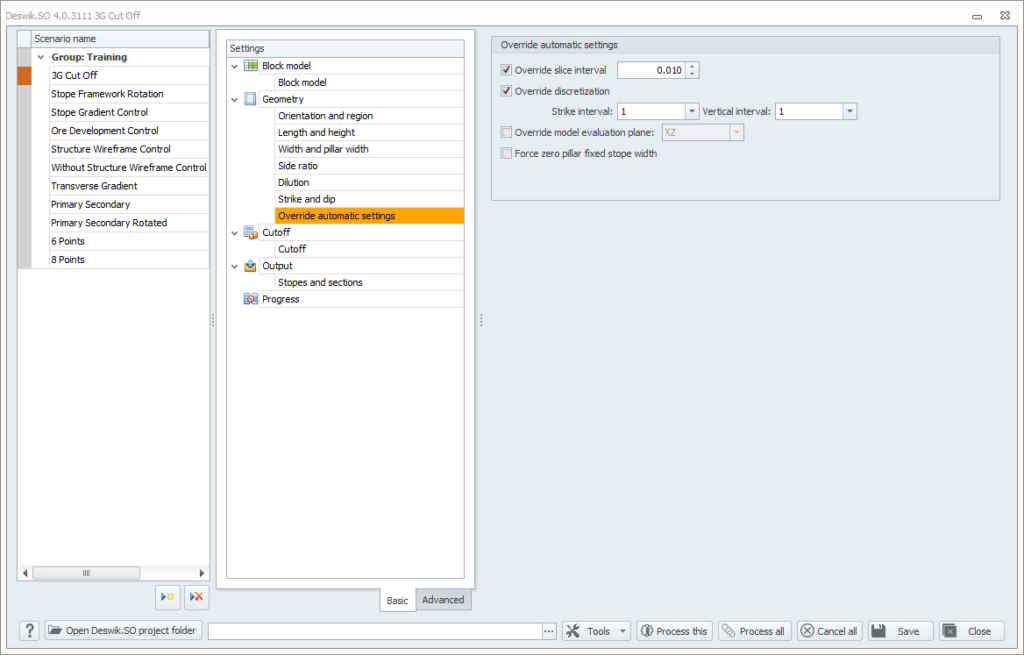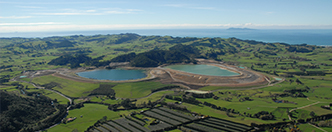Deswik.SO major release features AMS SSO version 4
2020.2 Deswik.SO has been updated to support AMS Stope Shape Optimizer version 4. This latest release from AMS features improvements to the SSO algorithm and several major new features and enhancements. In addition to SSO version 4, 2020.2 Deswik.SO also delivers a new user interface providing simpler navigation, more responsive user controls and performance improvements for model load times and scenario editing.
Here is a summary of some of the major new features:
- 6 or 8 point shapes were introduced in version 3 for the cross section. These shapes were annealed from the 4 point seed shape, but could only be used with a very limited number of functions. As of version 4, all functions now support 6 or 8 point shapes.
- Automatic settings: The selection of parameters for stope optimization has a significant effect on the speed and accuracy of results. To minimize user error, key parameters are now automatically assigned for you. However, you do have the ability to override any of these automatic settings if preferred.
- Smoothing: Previously, there were only two methods provided to smooth stope shapes. The Average method had the advantage of speed but could produce stope shapes that failed the geometry tests. The Anneal method always satisfied the geometry tests but with a large penalty in speed. In version 4, there are two new methods:
-
- Fast anneal, which uses the same algorithm as the Anneal method, but investigates a smaller number of possible runs – and hence is faster.
- Outer limit, which is similar to the Average method, but instead of averaging the position of adjacent corner vertices, it takes the outer most point of all vertex positions, and then expands shapes to create a maximum envelope of stope vertices.
- Unplanned dilution: In version 3, the only method available to factor in unplanned dilution was Equivalent Linear Overbreak/slough. You could specify the dilution interval as a constant or using block model field values. In version 4, you can also define the dilution interval for the ELOS method using a curve table. To provide even greater flexibility, version 4 also introduces a new method called Variable Overbreak slough, which is useful for large stopes where variable dilution is expected. Using this method, you can apply a different dilution interval for each vertex in the 4, 6, or 8 point shape.
- Test scenarios: In version 3, the Test scenarios tool provided two ways to run a scenario on a subset of data to test parameters and results prior to running the scenario on a larger data set. Version 4 introduces two additional testing options. You can either use the new Number of Stopes field to end a run after a specific number of stope shapes, or the new Start from Quad field to define the first QUAD processed.
- And finally, as of 2020.2, Deswik.SO supports the new block geomodel format, that is, files with a GMDLB extension.
For more information on the 2020.2 Deswik.SO, please contact your nearest Deswik office or refer to the 2020.2 release notes.




